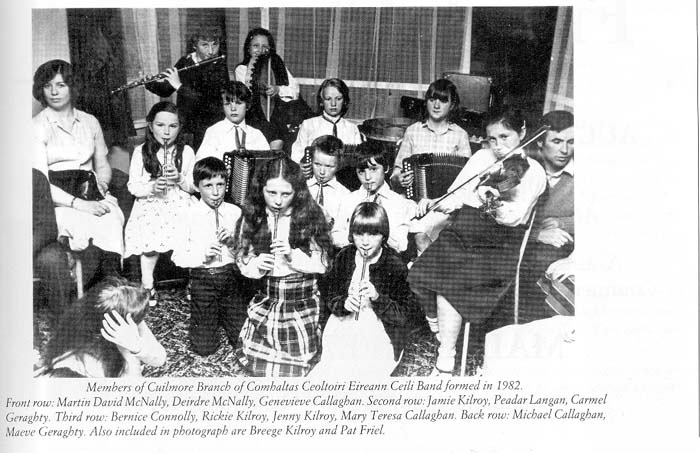
IN February 1987, Mr. John Dyra (Junior} set about removing a huge boulder from his father's farm at Mullaun, Newport but he was quite unprepared for the subsequent discovery of ancient treasure.
The Dyra Family had carried out land improvement work on the 12 acre field but had allowed a huge rock to remain undisturbed on top of a steep hill- known locally as "Dick's Hill". It was the removal of this rock which led to the unearthing of what has since been referred to as the "Kilbride Hoard."
The hoard which is now in the possession of the National Museum of Ireland, consists of two gold ornaments -one is a dress-fastener and the other a bracelet and two socketed bronze axeheads.
The dress-fastener was made from a sheet of gold, one terminal is missing. The incised decora- tion is confined to the terminal. Hatched triangles and panels of herring-bone ornament form the basis of the design.
Conservation treatment was undertaken in the National Museum's Conservation Laboratory as the axeheads, when found, were in an unstable condition. Both axes are of the socketed type and would have been attached to wooden shafts.
The type of objects which make up the Kilbride Hoard are well known from other parts of Ireland. They have been found singly and in hoards. They date from 700 -800 B.C., during the period of Irish Prehistory known as the Later Bronze Age.
